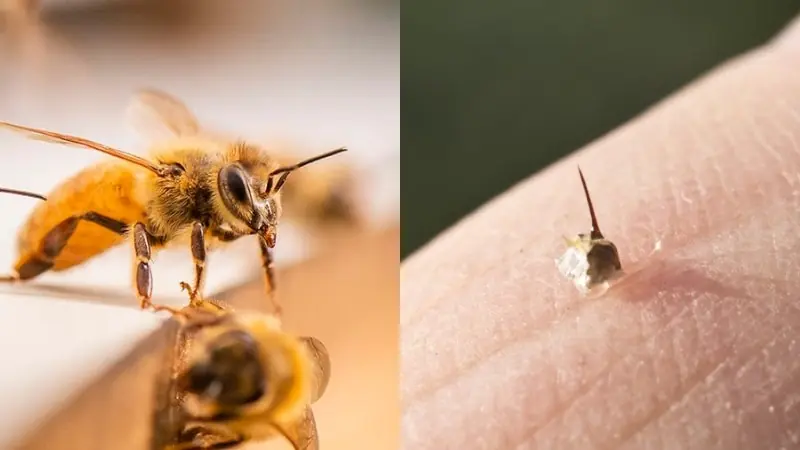
Most People Will Never Know — The Real Reason Pen Caps Have Holes
Pen caps are everywhere in daily life, yet very few people ever stop to wonder why so many of them have a tiny hole at the top. It seems like an insignificant detail, but that little opening is actually the result of smart engineering, safety standards, and decades of product design evolution. Once you know why it exists, you’ll never look at a pen cap the same way again.
A Brief History of Pen Caps
Writing tools didn’t always have caps. Quills and dip pens didn’t need them, but once fountain pens and ballpoint pens entered the scene, manufacturers needed a way to protect the tip and prevent ink from drying. Early caps did little more than cover the nib, but as pens became mass-produced household items, companies continued refining the design. The modern pen cap is the result of many small innovations—one of the most important being the tiny hole at the top.
Why Modern Pen Caps Are Designed the Way They Are
Today’s pen caps do far more than keep ink fresh. They protect the pen tip, attach easily to pockets, and help pens last longer. But the hole? That feature plays multiple roles, from safety to pressure control. It’s a perfect example of how even the smallest everyday object is designed with purpose.
Why Pen Caps Have Holes: The Top Reasons
1. Safety: Preventing Choking Hazards
The number one reason for the hole is safety. Pen caps are small—and children (and even some adults) have swallowed them accidentally. Regulations now require the hole so that if the cap becomes lodged in the throat, air can still pass through. This reduces the risk of suffocation and gives time for medical help to arrive. It’s one of those simple innovations that has likely saved countless lives.
2. Pressure Equalization for Better Ink Flow
A capped pen can experience pressure changes due to temperature or altitude. If air can’t escape, the pressure can force ink to leak or cause skipping while writing.
The hole allows air to move freely, preventing pressure buildup and keeping ink flow consistent. It’s a small detail with a big impact on how smoothly your pen writes.
3. Manufacturing and Cost Efficiency
From a production standpoint, that tiny hole can reduce plastic use slightly and streamline the molding process. Less material, easier manufacturing, faster output—small savings multiplied across millions of pens each year add up.
4. Aesthetic and Branding Purposes
Some brands use the hole as part of their design identity. It can create a cleaner, more modern look or distinguish one model from another. The detail has become so common that many consumers now expect it as part of a pen’s appearance.
Why Most People Don’t Know About This
Despite its importance, the hole in pen caps often goes unnoticed. Many assume it’s purely decorative—or never think about it at all. Misconceptions are common simply because the feature is so small and familiar. Raising awareness of its purpose highlights just how thoughtfully everyday objects are designed, even ones as ordinary as a pen.
Conclusion: A Tiny Feature With Big Purpose
That little hole most people overlook is actually a brilliant design choice. It improves safety, enhances performance, saves costs, and adds visual appeal—all in one tiny detail. Most people go their entire lives without knowing why pen caps have holes, but once you learn the reason, it becomes a reminder of how much engineering and thought go into the tools we use every day.
News in the same category


You’re Storing Your Spices Wrong — Here’s How to Do It Properly

Most People Have No Clue — The Real Reason Your Jeans Have That Tiny Pocket

I Had No Clue About This — The Right Way to Store Cooked Rice Safely

You're Doing It All Wrong. Here’s the Right Way to Clean Salt Stains Off Floors

Just Tried This — and Wow, It Works

You're Doing It All Wrong: Here’s the Right Way to Run Your Dishwasher in Winter

You're Doing It All Wrong — Here’s the Right Way to Maintain Your Furnace Filter

Strictly star La Voix pulls out of Blackpool live show due to injury as Shirley Ballas shares update

Coronation Street viewers plead with George to rescue Todd from manipulative Theo

‘She Was Trying to Provoke Me to Hit Her’: White Ohio Woman Falsely Accuses Black Boy of Stealing Wallet That Was Inside Her Purse

‘They Followed Us All the Way There’: Viral Video Shows Chicago School Kids Hunt and Ambush Mother and Her 9-Year-Old Son on Their Walk Home

Alan Carr admits it’s ‘nerve-wracking’ as he breaks silence on claims he’s ‘replacing’ Strictly hosts Tess Daly and Claudia Winkleman

Ravi kidnapped by drugs boss in early EastEnders release

Reinventing the Underground: How France’s Ancient Quarries Are Cooling Modern Cities

‘We’d Rather Throw $60K in a Club’—NBA Star J.R. Smith Confesses to Blowing Fortunes on Clubs Instead of Helping His Community

‘Doesn’t Qualify Because She’s Black’: Fans Of Angel Reese, A’ja Wilson Blast Forbes For Ranking Caitlin Clark ‘Most Powerful’ Woman Athlete In Sports

How Finland Is Turning Data Centers Into City-Wide Heating Systems

Keith Olbermann suggests he dodged a bullet as he gloats over ex-girlfriend Olivia Nuzzi’s latest scandals
News Post

I’m A Celebrity viewers ‘in tears’ as Jack Osbourne gets emotional over dad Ozzy’s death

You’re Storing Your Spices Wrong — Here’s How to Do It Properly

Most People Have No Clue — The Real Reason Your Jeans Have That Tiny Pocket

I Had No Clue About This — The Right Way to Store Cooked Rice Safely

You're Doing It All Wrong. Here’s the Right Way to Clean Salt Stains Off Floors

Just Tried This — and Wow, It Works

You're Doing It All Wrong: Here’s the Right Way to Run Your Dishwasher in Winter

You're Doing It All Wrong — Here’s the Right Way to Maintain Your Furnace Filter

A Simple 1-Minute Trick to Soothe Bee Stings – My Dad’s Easy Home Remedy (Scientifically Explained)

Rose Essential Oil: New Research Shows 30 Days of Aromatherapy May Boost Gray Matter Volume

Norway’s Living Kelp Barriers: Nature-Built Protection for a Changing Coastline

EMBER — THE KITTEN WHO CAME OUT OF THE FIRE.

Italy’s Porous Streets: A Quiet Innovation That Lets Cities Breathe Again

When the Sky Attacked, Hundreds of Pelicans Waited for a Miracle.

The Little Dog Behind the Fence With the Biggest Heart.

The Moment a Wild Elephant Taught a Human a Lesson.

The Elephant Who Came Looking for Mangoes.

The Cowboy and His Champion.
